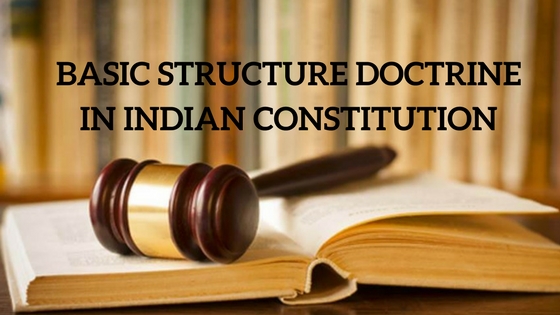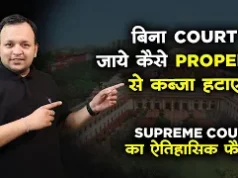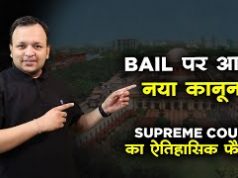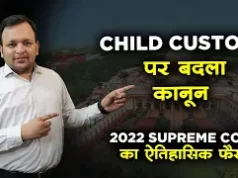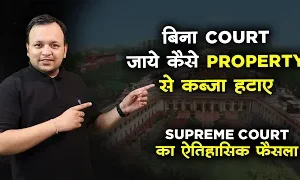Aapka Consultant Judgment Series- In this series, we are providing case analysis of Landmark Judgments of Hon’ble Supreme Court of India.
His Holiness Kesavananda Bharati Sripadagalvaru Vs. State of Kerala
AIR1973SC1461, (1973)4SCC225, [1973]SuppSCR1
Hon’ble Judges/Coram: H.R. Khanna, S.M. Sikri, C.J., A.N. Grover, A.N. Ray, D.G. Palekar, J.M. Shelat, K.K. Mathew, K.S. Hegde, M. Hameedullah Beg, P. Jaganmohan Reddy, S.N. Dwivedi, A.K. Mukherjea and Y.V. Chandrachud, JJ.
Decided On: 24.04.1973
FACTS: –
In this case, the important question before the court was to decide the constitutional validity of the 24th Constitutional Amendment Act, 1971. Parliament enacted the same which amended the Article 368 giving the power to the Parliament. It states that Parliament would have the constituent power under Article 368 and can amend by way of addition, variation or repeal any provision of the Indian Constitution and in such cases; Article 13 would not be a bar for the purpose of amendment. This was mainly done to nullify the ruling of the Supreme Court in the case of Golak Nath. Therefore, the petitioners in this case came before this court challenging the constitutional validity of the Kerala Land Reforms Act, 1963. But as the case was pending in the Court, the impugned Act was placed by the 29th Constitutional Amendment Act under the ninth Schedule of the Indian Constitution so as to take it beyond the ambit of the Judicial Scrutiny. The petitioners challenged the validity of the 24th, 25th, 26th and 29th Constitutional Amendment Acts.
ISSUE: –
- What is the extent of the Amending Power of the Parliament?
JUDGMENT: –
Court observed that power of amendment under Article 368 is plenary with no implied or inherent limitations and that it includes the power to add, alter or repeal the various Articles of the Constitution not excluding those relating to fundamental rights. However, it does not extend to altering the basic structure or framework of the Constitution. No part of a fundamental right can claim immunity from amendatory process by being described as the essence or core of that right. The power of amendment would also include within itself the power to add, alter or repeal the various Articles.
An important proposition enunciated by a majority of Judges in the Kesavananda Bharati case is that the power to amend does not include the power to alter the basic structure or framework of the Constitution to the extent of changing its identity. The word ‘amendment’ postulates that the old Constitution survives without loss of its identity despite the change and continues even though it has been subjected to alterations. As a result of the amendment, the old Constitution cannot be destroyed or done away with; it is retained though in the amended form. What then is meant by the retention of the old Constitution? It means the retention of the basic structure or framework of the old Constitution . . . it is not permissible to touch the foundation or to alter the basic institutional pattern. The words ‘amendment of the Constitution’ with all their wide sweep and amplitude cannot have the effect of destroying or abrogating the basic structure or framework of the Constitution.”
Quoting Jawaharlal Nehru from his speech in support of the First Amendment, Court observed that “what Pt. Nehru contemplated by amendment was the varying of the Constitution ‘here and there’ and not the elimination of its basic structure, for that would necessarily result in the Constitution losing its identity”. It may be observed that the word “structure” connotes among other things, the whole of the essential parts of a thing. If the structure of a thing has to be retained, it is not easy to understand how one can get rid of the essential features of it. In other words, the power to amend does not include within itself the power to change the basic structure or framework of the Constitution.
Court lists down few examples to show the basic structure of the Constitution like democratic and republican form of Government, bicameral legislature at the centre, and secular character of the State.Supremacy of the Constitution, Republican and democratic form of Government; Secular character of the Constitution; Separation of powers between the legislature, the executive and the judiciary;Federal character of the Constitution.” Keeping in mind all the above mentioned observations, Court held that 24th, 25th and 29th Constitutional Amendment Acts are valid.
The majority of the judges in this case observed that rule as laid down in the Golak Nath case does not hold good. In Golak Nath Case, it was laid down that Article 368 of the Indian Constitution merely prescribes the procedure for the amendment in the Indian Constitution and the power of the Amendment had to be traced to Article 245, 246 and 248 r/w Entry 97 List I of Schedule VII. Court rejected this proposition of law in this case.
HELD: –
Court by the majority of 7:6 held that the power to amend does not include the power to alter the basic structure or framework of the Constitution to the extent of changing its identity. It is this proposition that will be applied in testing the validity of a constitutional amendment in the future. Moreover, Majority of the judges held that Amendment is not covered within the ambit of Word “Law” under Article 13(2) of the Indian Constitution.
His Holiness Kesavananda Bharati Sripadagalvaru Vs. State of Kerala
AIR1973SC1461, (1973)4SCC225, [1973]SuppSCR1
Hon’ble Judges/Coram: H.R. Khanna, S.M. Sikri, C.J., A.N. Grover, A.N. Ray, D.G. Palekar, J.M. Shelat, K.K. Mathew, K.S. Hegde, M. Hameedullah Beg, P. Jaganmohan Reddy, S.N. Dwivedi, A.K. Mukherjea and Y.V. Chandrachud, JJ.
Decided On: 24.04.1973
FACTS: –
In this case, the important question before the court was to decide the constitutional validity of the 24th Constitutional Amendment Act, 1971. Parliament enacted the same which amended the Article 368 giving the power to the Parliament. It states that Parliament would have the constituent power under Article 368 and can amend by way of addition, variation or repeal any provision of the Indian Constitution and in such cases; Article 13 would not be a bar for the purpose of amendment. This was mainly done to nullify the ruling of the Supreme Court in the case of Golak Nath. Therefore, the petitioners in this case came before this court challenging the constitutional validity of the Kerala Land Reforms Act, 1963. But as the case was pending in the Court, the impugned Act was placed by the 29th Constitutional Amendment Act under the ninth Schedule of the Indian Constitution so as to take it beyond the ambit of the Judicial Scrutiny. The petitioners challenged the validity of the 24th, 25th, 26th and 29th Constitutional Amendment Acts.
ISSUE: –
- What is the extent of the Amending Power of the Parliament?
JUDGMENT: –
Court observed that power of amendment under Article 368 is plenary with no implied or inherent limitations and that it includes the power to add, alter or repeal the various Articles of the Constitution not excluding those relating to fundamental rights. However, it does not extend to altering the basic structure or framework of the Constitution. No part of a fundamental right can claim immunity from amendatory process by being described as the essence or core of that right. The power of amendment would also include within itself the power to add, alter or repeal the various Articles.
An important proposition enunciated by a majority of Judges in the Kesavananda Bharati case is that the power to amend does not include the power to alter the basic structure or framework of the Constitution to the extent of changing its identity. The word ‘amendment’ postulates that the old Constitution survives without loss of its identity despite the change and continues even though it has been subjected to alterations. As a result of the amendment, the old Constitution cannot be destroyed or done away with; it is retained though in the amended form. What then is meant by the retention of the old Constitution? It means the retention of the basic structure or framework of the old Constitution . . . it is not permissible to touch the foundation or to alter the basic institutional pattern. The words ‘amendment of the Constitution’ with all their wide sweep and amplitude cannot have the effect of destroying or abrogating the basic structure or framework of the Constitution.”
Quoting Jawaharlal Nehru from his speech in support of the First Amendment, Court observed that “what Pt. Nehru contemplated by amendment was the varying of the Constitution ‘here and there’ and not the elimination of its basic structure, for that would necessarily result in the Constitution losing its identity”. It may be observed that the word “structure” connotes among other things, the whole of the essential parts of a thing. If the structure of a thing has to be retained, it is not easy to understand how one can get rid of the essential features of it. In other words, the power to amend does not include within itself the power to change the basic structure or framework of the Constitution.
Court lists down few examples to show the basic structure of the Constitution like democratic and republican form of Government, bicameral legislature at the centre, and secular character of the State.Supremacy of the Constitution, Republican and democratic form of Government; Secular character of the Constitution; Separation of powers between the legislature, the executive and the judiciary;Federal character of the Constitution.” Keeping in mind all the above mentioned observations, Court held that 24th, 25th and 29th Constitutional Amendment Acts are valid.
The majority of the judges in this case observed that rule as laid down in the Golak Nath case does not hold good. In Golak Nath Case, it was laid down that Article 368 of the Indian Constitution merely prescribes the procedure for the amendment in the Indian Constitution and the power of the Amendment had to be traced to Article 245, 246 and 248 r/w Entry 97 List I of Schedule VII. Court rejected this proposition of law in this case.
HELD: –
Court by the majority of 7:6 held that the power to amend does not include the power to alter the basic structure or framework of the Constitution to the extent of changing its identity. It is this proposition that will be applied in testing the validity of a constitutional amendment in the future. Moreover, Majority of the judges held that Amendment is not covered within the ambit of Word “Law” under Article 13(2) of the Indian Constitution.
To Get Legal Opinion from Advocates/ Legal Experts, Please click here
To Get Legal Opinion from Retired Hon’ble Judges, Please click here



